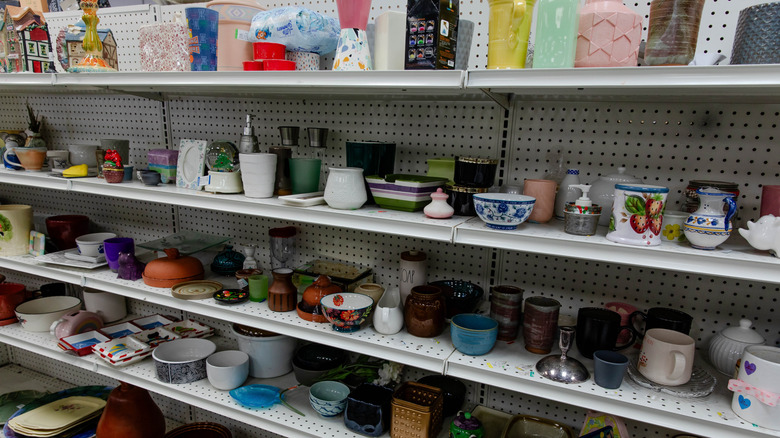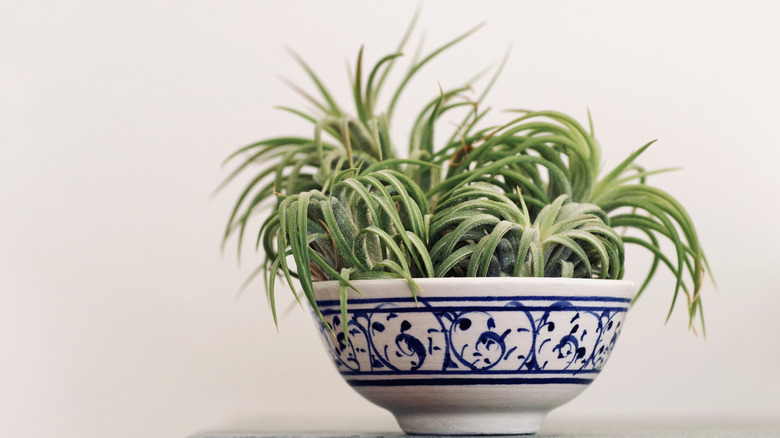Transform Inexpensive Thrifted Bowls Into Unique Countertop Or Shelf Decor
Whether you are an environmentally conscious person or a shopper who loves to find a good deal, thrift stores are the place to be. If you are an avid thrifter, you have likely found yourself holding a beautiful item while trying to picture how you can use it in your home. When you find yourself holding a special bowl, in particular, you can rest assured knowing that there are plenty of ways to style it in your home as shelf or countertop decor. The simplest way to use a thrifted bowl is for storage or organization. Setting a stunning vintage bowl on your countertop and dropping keys or mail into it is a great way to add easy organization. But you can also get creative and turn it into a decorative planter for real or faux plants or fill it with decorative or seasonal filler items.
Buying secondhand bowls keeps perfectly usable items out of landfills, which lowers their environmental footprint. Plus, when more people buy secondhand, the demand for manufacturing new items decreases. Lower rates of production mean less negative environmental impact from production. On top of those benefits, you can find truly unique and gorgeous bowls that will stand out in your home design because they're not widely available. So, if you find a secondhand bowl that you like, upcycling it and giving it a new home, whether it is for organization or housing a plant, is a great way to add style to your space without hurting the planet or your budget. Check out how to style some of the most common items you will find at a thrift store in your home for even more inspiration to pick out secondhand items the next time you shop.
Turning your thrifted bowl into a planter
To turn your thrifted bowl into a planter, simply place a faux or real plant inside. If you are styling a real plant, you will need to know about proper drainage and how to achieve it with your thrifted bowl. One way to ensure proper drainage is to use the bowl as a decorative outer container with the plant housed inside of a separate plastic planter with drainage holes. Choose a bowl that's large enough to hide the plastic pot completely without covering the plant. Place a layer of sand, gravel, or charcoal at the bottom of your decorative bowl, then place a plastic nursery planter with drainage holes containing your plant into the bowl.
Alternatively, if you are willing to take a bit of a risk, you can attempt to add drainage holes to your plant pots to plant directly into your bowl. If your bowl is glass, ceramic, or clay, use a drill with a pointed carbide tip that can pierce the material without cracking it. Put the bowl on a soft surface, spray a bit of water, and use the drill softly at a low speed to reduce the likelihood of cracks. Placing a piece of tape on the bowl can keep the tip from slipping as you start to drill the hole. For a small bowl with a diameter of less than 6 inches, one hole in the center should provide adequate drainage. If the bowl is larger, it will need more drainage holes.

